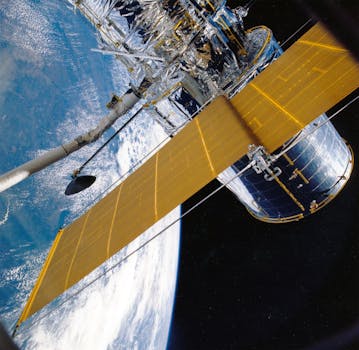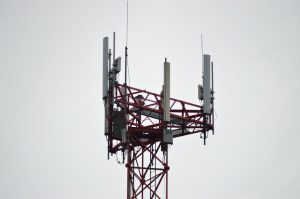GEO Satellites: Understanding the Technology and Applications of Geostationary Orbit Satellites

GEO Satellites: Introduction to Geostationary Orbit Satellites
GEO satellites, or geostationary orbit satellites, are a type of satellite that orbits the Earth at an altitude of approximately 36,000 kilometers above the equator. At this altitude, the satellite’s orbital period matches the Earth’s rotational period, allowing it to remain stationary in the sky relative to a fixed point on the Earth’s surface. This unique characteristic makes GEO satellites ideal for a variety of applications, including telecommunications, navigation, and weather forecasting.
The concept of GEO satellites was first proposed by scientist Arthur C. Clarke in 1945, and the first GEO satellite, Syncom 2, was launched in 1963. Since then, hundreds of GEO satellites have been launched, and they have become a critical component of modern telecommunications infrastructure. In this article, we will delve into the technology and applications of GEO satellites, exploring their role in shaping the modern world.
The Technology Behind GEO Satellites
GEO satellites are designed to operate in the harsh environment of space, where they are exposed to extreme temperatures, radiation, and solar winds. To withstand these conditions, GEO satellites are built with robust materials and equipped with advanced propulsion systems, power generation systems, and communication equipment. The satellites are typically launched into space using powerful rockets, such as the Ariane 5 or the SpaceX Falcon 9, and then maneuvered into their final orbit using onboard propulsion systems.
One of the key technologies that enable GEO satellites to operate efficiently is the use of solar panels to generate power. The solar panels convert sunlight into electrical energy, which is then stored in batteries for use during periods of darkness. Additionally, GEO satellites use advanced propulsion systems, such as ion thrusters, to maintain their orbit and perform station-keeping maneuvers. These propulsion systems use electrical energy to accelerate ions, which are then expelled to create thrust.
Applications of GEO Satellites
GEO satellites have a wide range of applications, including telecommunications, navigation, weather forecasting, and Earth observation. In the field of telecommunications, GEO satellites are used to provide broadband internet access, television broadcasting, and mobile phone connectivity. They are particularly useful for providing services to remote or underserved areas, where terrestrial infrastructure is limited or non-existent.
In navigation, GEO satellites are used to provide location information and timing signals, which are essential for applications such as GPS, aviation, and maritime navigation. The satellites transmit signals that are received by GPS receivers on the ground, allowing users to determine their precise location and velocity. Additionally, GEO satellites are used to monitor weather patterns and provide early warnings for natural disasters such as hurricanes, typhoons, and tsunamis.
Future Developments and Challenges
As the demand for satellite services continues to grow, the GEO satellite industry is facing new challenges and opportunities. One of the major challenges is the increasing congestion in the geostationary orbit, which is leading to concerns about interference and collisions between satellites. To address this issue, satellite operators and regulators are working to develop new standards and guidelines for satellite operations, including the use of advanced propulsion systems and collision avoidance maneuvers.
Another challenge facing the GEO satellite industry is the rise of new satellite technologies, such as low-Earth orbit (LEO) satellites and medium-Earth orbit (MEO) satellites. These satellites offer faster and more efficient services, but they also pose a threat to the traditional GEO satellite business model. To remain competitive, GEO satellite operators are investing in new technologies, such as high-throughput satellites and advanced antennae systems, which will enable them to provide faster and more efficient services.



